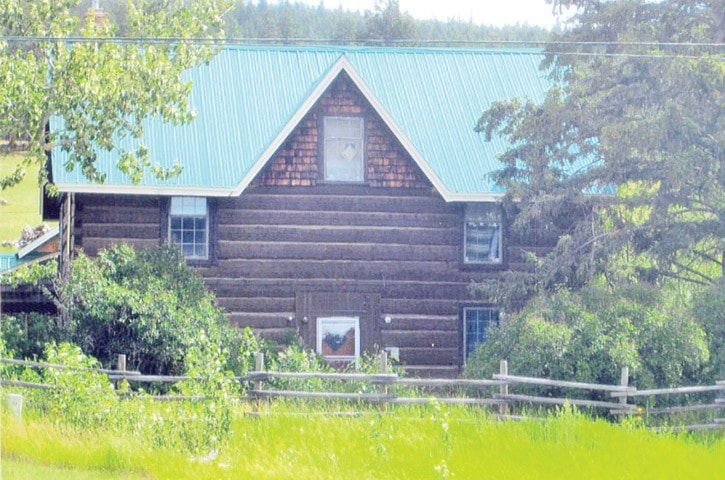In the mid 1860s, Charles M. Beak, one of the early cattlemen at the 108 Mile House, saw the advantages of developing a market for the sale of beef and dairy products in Barkerville and Richfield.
He formed a consortium of ranchers in the Lac La Hache valley, and this group became a major supplier to the goldfields.
Ranch hands were needed to look after the herds, and in 1865, Beak hired a young Irishman named Michael McCarthy. Mike was an outgoing, gregarious fellow who worked hard and did a thorough job.
He had an engaging personality, and he was well liked — except when he was drinking.
Unfortunately, Mike liked to party, and when he got started, he just couldn’t seem to stop, and bad things happened.
For example, one time, Mike was returning north on the BX stage from Ashcroft after delivering some horses there.
It was wintertime, and it was cold, and at each roadhouse stop, Mike drank his fill of whiskey. By 83 Mile, he had become a real nuisance, and the proprietor refused to serve him because he was too drunk.
Somehow, Mike persuaded the innkeeper to fill up a flask for him to take on the stage to “ward off the chills.” The stage drivers didn’t like having drunks on board — not only did they annoy the other passengers, there had also been a recent lawsuit against the BX Company when an inebriated gentleman fell out of the coach on a sharp bend in the road.
The 115 Mile House was the scheduled dinner stop on this particular trip (Mike was headed to 127 Mile, where he was employed at the time).
The coach pulled in and the passengers went into the parlour where there was a roaring fire going in the drum heater.
Mike staggered off the stage and into the room, announcing that his flask was all that had kept him from freezing to death.
As he tried to take off his big overcoat, he back into the stovepipe, bringing it crashing down, filling the room with smoke and spewing hot coals onto the dry, wooden floor.
If it hadn’t been winter, with lots of snow handy to throw on the spot fires, the whole roadhouse might have gone up in flames.
Mike was not contrite, however, he blamed the “damned heater” for getting in his way.
Most of the time, though, Mike remained sober. He was able to save his money, because even when he did drink, he did not gamble.
In 1871, he bought a half interest in the 127 Mile Ranch, known locally as the Blue Tent Ranch.
By 1874, he was able to put enough money and credit together to purchase the other half.
In August, 1876, he married Johanna, the oldest daughter and third child of Henry and Antoinette Felker.
It must have been a marriage made in heaven, because over 16 years between 1877 and 1893, the couple had nine children.
In 1880, after much back and forth negotiating, the McCarthys traded properties straight across with the Wrights, who owned the 137 Mile House and surrounding lands.
Johanna wanted to live closer to her parents, who had settled at 144 Mile, and with their growing family, the McCarthys needed a larger house.
137 Mile fit the bill perfectly. It never became a roadhouse for stagecoach passengers, but it was ideally suited as a stop for teamsters on the wagon road.
With good pasture, lots of room to maneuver, and an artesian well that produced good water year round, the 137 Mile House became a regular stop for many.
Not surprisingly, the McCarthys were a fun-loving family, and the parties they hosted at 137 Mile were legendary.
Mike became the most popular square dance caller in the area, and his six daughters, all described as good looking and excellent dancers, ensured that the parties and dances frequently held at 137 Mile were always well attended.
Johanna McCarthy died in childbirth in 1893, but the daughters carried on the day to day operations of the stopping house until one by one they left to be married.
When his youngest daughter, Anne, left in 1910, Mike closed down the stopping house and went into semi retirement.
Mike died in the winter of 1915 at home. He was 66 years old.
According to his wishes, a wake was held, with food, dancing and, of course, the burial.
But there was a problem. As the grave diggers worked on the frozen ground to make a hole long enough and deep enough to hold the coffin, they hit a very large boulder that they couldn’t move.
They had another few drinks and then they decided that rather than starting another grave in the extreme cold, they would just deepen the hole at the end of the big rock and bury the coffin standing on its end.
So they did, and Mike was buried standing up. He would have enjoyed that!
